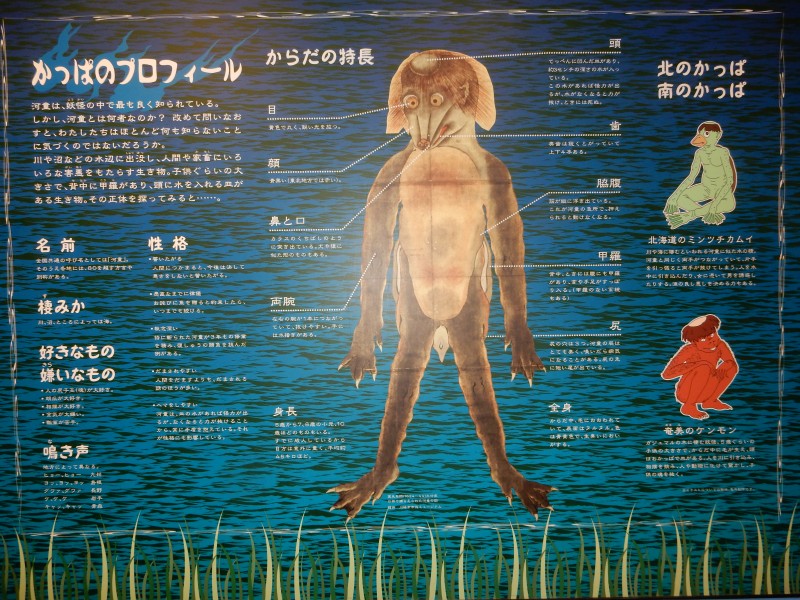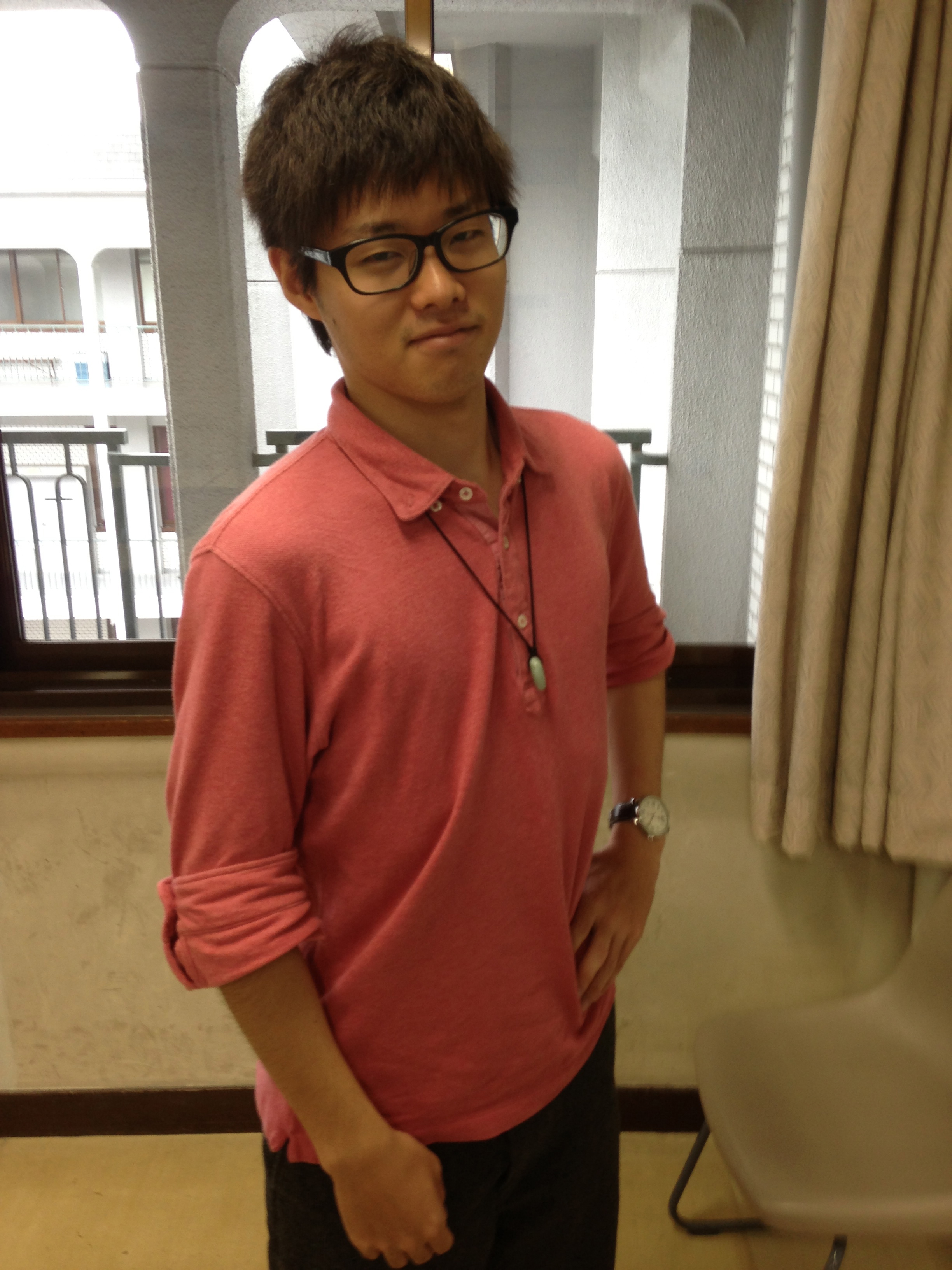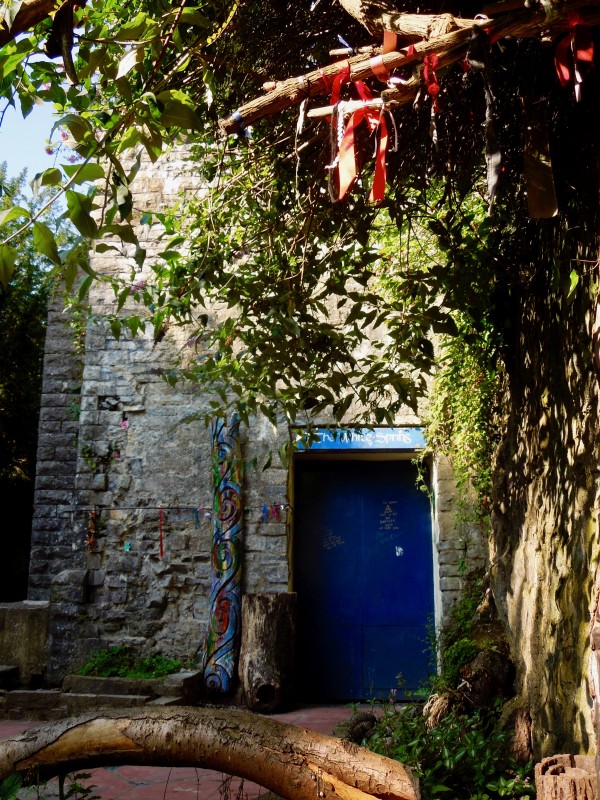
Detailed explanation of perhaps the most popular of the yokai, the kappa
Recently publications about yōkai are prevalent, but what are they exactly? The answer seems to be rather vague. Here’s Wikipedia’s answer: “a class of supernatural monsters, spirits and demons in Japanese folklore. The word yōkai is made up of the kanji for “bewitching; attractive; calamity;” and “spectre; apparition; mystery; suspicious”.
One of my Japanese students has written on the subject, and I thought it was of interest for the link of yōkai origins with Shinto and animism. Here then, with thanks to Kosei, is an excerpt from his essay:

Kosei, wearing a magatama round his neck
Yokai came from the idea of yao yorozu no kami (eight myriad gods). It means everything in nature has a god or spirit. A fleeling of worshipping existence in nature seemed to turn into the idea of animism. In other words, Shinto seems to be related to yōkai. Shinto is also polytheism. Kami of Shinto comprise different kinds of gods, spirits and ideas such as worshipping great persons who died, ancestor worship and animist kami. These kami may bless people. On the other hand, they may also curse people.
It was thought spirits had emotions. So there are two different kinds of soul in Shinto. One was nigi-mitama, which is a positive side of kami such as sunlight and welcome rain. It is a sign of the grace of kami. The other side was ara–mitama, which is the negative side of kami. It caused natural disasters, plagues and desolation of people’s hearts through war and suffering. People kept offering prayers for nigimitama to be guardian deities. The objects of prayer were ancestral spirits, nature and animals. People tried to seek repose of the souls and make the spirits benevolent by offerings in order to avoid disasters and misfortunes. Yōkai are thought to be aramitama that were not offered prayers, worship and offerings. People forgot or neglected them.
Dragon in Poland – a type of European yokai?
In ancient times yōkai such as oni or daijya appeared in literature. And later yōkai were drawn in emaki scrolls in medieval times. Each yōkai was described in detail as to how it looked. At first people feared them as terrifying monsters, but as time passed they became more familiar. Finally because of the advance of science and rationality, people learnt to enjoy them as entertainment.
A typical kind of yōkai is the kappa. It lives all over Japan, particularly in rivers, waterside or the sea. The appearance is wet green skin, with a shell on the back like a turtle. It has a bill and webbed hands and feet. The top of its head contains a hollow basin holding water. In addition, it smells fishy. Kappa are very mischievous and sometimes drag people into the water. Also it likes sumo wrestling with children. There are various theories about its origin. One possibility is that it was originally a god of water, and in some areas it is worshipped as a kami. In other areas it was simply a fearful monster which causes misfortune.
Japanese yōkai and British fairies have some similarities. They are mythical and supernatural beings. They can be mischievous, like Puck. And like yōkai, they seem to have their origin in animism. They are particularly well-known in Celtic culture, with its Druidic emphasis on nature spirits.
Kappa at Suwa Jinja in Nagasaki. Notice the hollow in its head where water collects.

Pagan spring at Glastonbury, said to be the haunt of fairies



I heard that there are countless different kinds of yokai and new kinds are always being born, is this a common belief in Japan?
I believe so, but I’m no expert. Wikipedia might serve you better, or try this link: http://yokai.com/